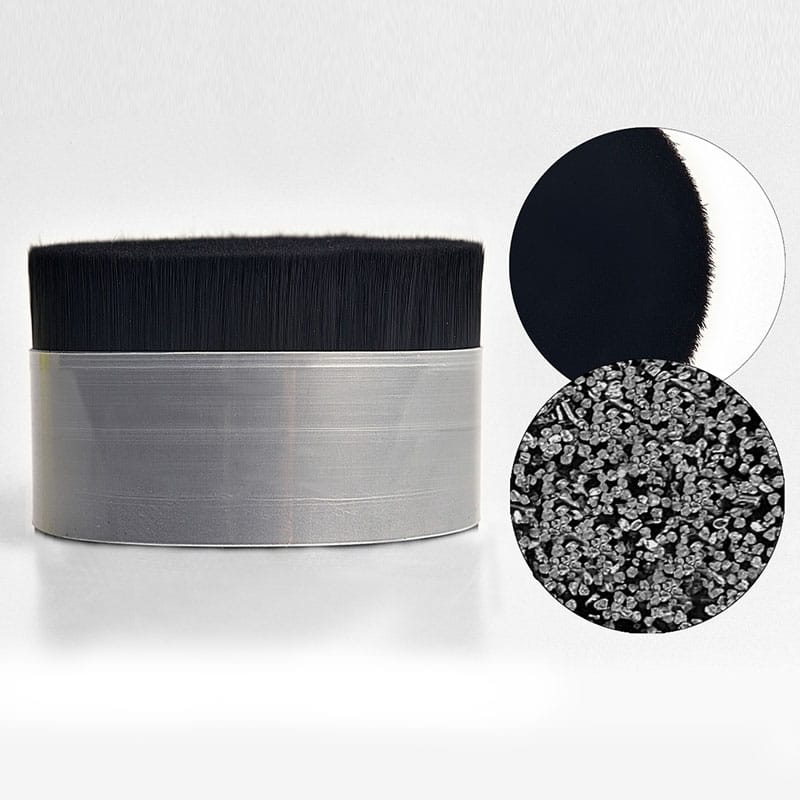Professional Craftsmanship of False Eyelashes
False eyelashes have become an essential product in the beauty industry, where their quality directly impacts both the makeup effect and the wearer’s experience. To produce high-quality false eyelashes, every step, from material selection to production technique, must meet strict standards. This article will delve into the professional craftsmanship behind false eyelashes, offering an in-depth look at the processes that bring these products to life.
I. Selection of High-Quality Materials
The first and perhaps most crucial aspect of false eyelash production is the choice of raw materials. Quality materials determine the overall comfort and realistic appearance of the eyelashes.
- Eyelash Fiber Materials:
- Natural Hair: Premium false eyelashes are often made from natural animal hair, such as mink or fox fur. These materials offer superior softness, a realistic appearance, and high comfort. However, natural fibers are more expensive and are usually reserved for high-end products.
- Synthetic Fibers: Synthetic lashes are increasingly popular, particularly those made from Polybutylene Terephthalate (PBT) and Polyethylene Terephthalate (PET) fibers. These fibers provide excellent elasticity, softness, and gloss, and can be customized to suit various preferences. PET, in particular, is well-suited for disposable lashes due to its lower cost, making it an economical option. On the other hand, PBT is more durable and is often used in premium products that require long-lasting wear and a natural look.
- Silk Protein Fibers: As a newer option, silk protein fibers are lightweight, soft, and hypoallergenic, making them ideal for individuals with sensitive skin.
- Eyelash Band Materials:
- Cotton Bands: These bands are breathable and soft, providing comfort but lacking durability. They are more suited for short-term use.
- Plastic Bands: While slightly firmer, plastic bands offer better stability and longevity, making them a go-to option for everyday wear.
- Silicone Bands: Known for their flexibility and elasticity, silicone bands conform to the eyelid’s shape more naturally and comfortably, making them a favorite among consumers seeking a soft, natural feel.
II. Precision in Craftsmanship
The production of high-quality false eyelashes involves multiple detailed processes, each ensuring the lashes meet strict standards of quality and durability.
- Selection of Fiber: Based on the style and design, the appropriate fibers are selected and sorted for production. Each fiber’s softness, thickness, and gloss must meet exact specifications.
- Arranging Fibers: The chosen fibers are carefully arranged onto the eyelash band following specific densities and lengths. This is a meticulous process, as evenly distributed fibers ensure a natural, voluminous look. Automated or semi-automated machines are sometimes employed to enhance efficiency and consistency.
- Fixing and Bonding: The fibers are bonded to the eyelash band using specialized adhesives that ensure the lashes stay firmly attached. The bonding process also includes shaping the lashes to maintain their form during storage and use.
- Cutting and Shaping: After the lashes are bonded, they are cut and shaped according to the desired style. For example, cat-eye lashes require longer outer edges, while round styles emphasize the center for a more open-eyed look.
- Tapering and Processing: The natural appearance of false eyelashes depends on how well the fiber tips are tapered. There are two primary methods for creating tapered tips:
- Physical Grinding: Mechanical grinders taper the fibers into cone-like shapes, giving them a more natural appearance.
- Chemical Oxidation: This method uses oxidizing agents to thin the fiber tips gradually, creating a softer and more natural feel that mimics real lashes.
- Dyeing and Organizing: False eyelashes undergo high-temperature dyeing to ensure rich, long-lasting color. After dyeing, machines and manual workers organize the lashes to ensure they are neat and evenly aligned.
- Final Touches and Quality Control: Each set of lashes is hand-finished to remove excess fibers and imperfections. Following this, they undergo stringent quality control checks to ensure they meet the necessary standards of length, thickness, and overall appearance.
III. Environmental Considerations and Sustainability
As sustainability becomes a growing concern, manufacturers of false eyelashes are increasingly focused on reducing environmental impacts during production.
- Biodegradable Materials: Many producers are now turning to biodegradable versions of PBT and PET fibers. These materials can naturally decompose under specific conditions, helping to reduce pollution and environmental impact.
- Waste Reduction: During production, manufacturers strive to minimize waste by maximizing the efficiency of material use. By optimizing processes and reducing excess, they can lessen the ecological footprint of each product.
IV. Technological Innovation and Customization
Technological advancements are revolutionizing false eyelash production, allowing for greater precision, efficiency, and creativity in design.
- 3D Printing Technology: Some manufacturers are experimenting with 3D printing to precisely control the shape, length, and curl of each lash. This technology also allows for more intricate designs and a greater degree of customization.
- Personalized Service: As consumers seek more personalized products, some manufacturers are offering customized false eyelashes tailored to individual eye shapes, makeup preferences, and personal styles.
V. Future Trends in False Eyelash Production
The future of false eyelash production is likely to focus on sustainability, convenience, and personalization. Consumers are looking for eco-friendly products that are easy to apply and offer high-quality, natural results. Manufacturers will continue developing innovative materials and techniques to meet these demands while balancing environmental considerations.









Leave A Comment